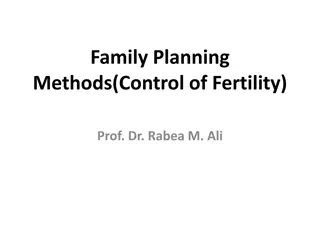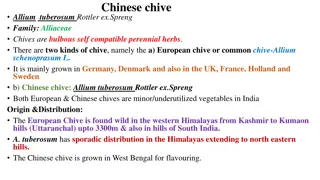Impact of Geography on Fertile Crescent Civilizations
The geography of the Fertile Crescent, characterized by deserts, rivers, plains, and mountains, shaped the development of ancient civilizations. Deserts offered protection, river floods provided fertile soil for farming, and rivers served as crucial water sources for food, trade, and transportation. The transition from nomadic life to settled farming enabled job specialization and the growth of trade, leading to the exchange of goods and ideas that enriched life in the region.
Download Presentation

Please find below an Image/Link to download the presentation.
The content on the website is provided AS IS for your information and personal use only. It may not be sold, licensed, or shared on other websites without obtaining consent from the author. Download presentation by click this link. If you encounter any issues during the download, it is possible that the publisher has removed the file from their server.
E N D
Presentation Transcript
Fertile Crescent: Unit Test Study Guide Part 1 (Short Answer Test)
Civilization a group of people living together who have organized systems of government, education, religion, and a social structure Religion Systems of Government An Organized Social Structure Education
How did the geography of the Fertile Crescent affect the people of the Fertile Crescent? Desert Deserts provide natural barriers which help protect against invaders.
How did the geography of the Fertile Crescent affect the people of the Fertile Crescent? Regular flooding of the Tigris and Euphrates Rivers The floods left rich silt deposits on the land (this made the soil fertile for farming).
How did the geography of the Fertile Crescent affect the people of the Fertile Crescent? What other impact did the Tigris and Euphrates Rivers have? Source of Fresh Water Food Source (fish) Trading Transportation
How did the geography of the Fertile Crescent affect the people of the Fertile Crescent? Plains
How did the geography of the Fertile Crescent affect the people of the Fertile Crescent? Mountains
Why was it important that nomads were able to become farmers? People were able to stay in one place instead of following the herds of animals. Instead, people began to domesticate animals. This led to: A surplus of food: The surplus of food led to: job specialization (not everyone needed to farm they could do other jobs) This led to the beginning of a civilization!
Why was the growth of trade important? both goods and ideas were exchanged trade led to a rich life because of the sharing of ideas between cultures trade opened up the world to the people of the Fertile Crescent
Can you Explain the Class System? King Business People, Landowners, Government Workers Artisans and Farm Workers Slaves
Invention of Writing: cuneiform (Sumerian system of picture writing) What was the impact of the invention of writing? 1. left a written record for historians 2. a new way of communication in the Fertile Crescent 3. taxes, arguments, literature, business transactions, etc. were now written down
Fertile Crescent: Unit Test Study Guide Part 2 (Short Answer Test)
ziggurat-- a huge, pyramid-shaped templebelieved to link/connect heaven and Earth
Hammurabi King of Babylon he governed a huge empire he wanted laws to help him govern the empire in a new way Code of Hammurabi: rules to live by crimes had a punishment ( an eye for an eye )
Ten Commandments Hebrew law providing guidance for the worship of God they set down rules for moral behavior The Code of Hammurabi is a set of laws with consequences. The Ten Commandments were a guideline for living a good life.
Phoenicians 1. The Phoenicians were sea-going people. 2. They built large wooden ships. 3. They also helped to develop the alphabet.
Coins were invented by the Lydians. Coins made trading simpler and easier.
Polytheism vs Monotheism Polytheism = the belief in many gods Monotheism = the belief in one god
You will need to be able to write 3 items for each category. Do not repeat an item once you have used it. Here are some samples: GRAPES Geography: Tigris River, Euphrates River, desert, plain Religion: Judaism, monotheism, polytheism, ziggurats, Ten Commandments Achievements: cuneiform, irrigation systems, coins, alphabet Political: Hammurabi, Sargon, city-states, Code of Hammurabi, empire Economic: taxes, barter, artisans, scribe Social: king, slaves, farmers, government workers























